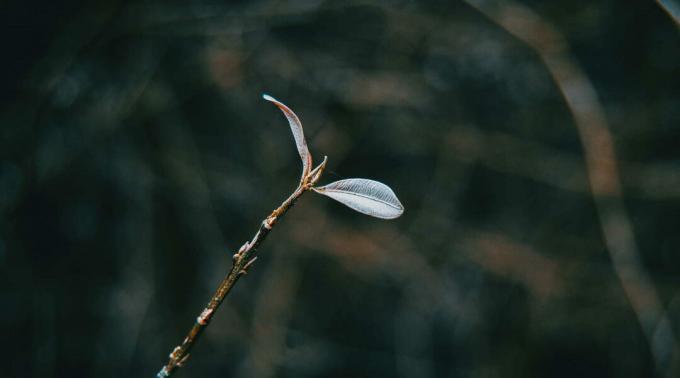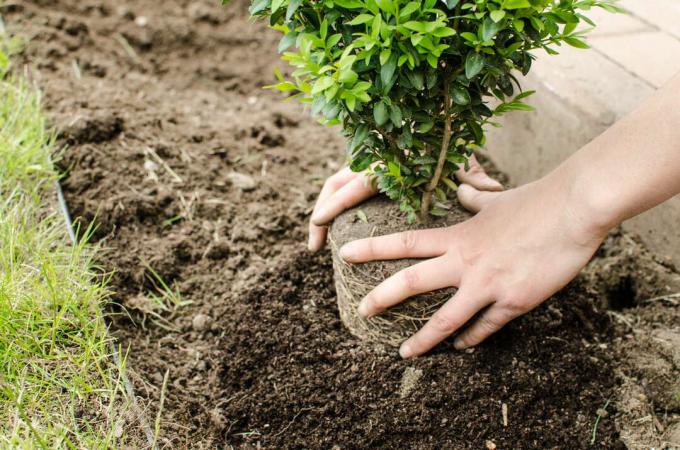The death of shoots on boxwood can disfigure entire gardens. A fungus is responsible for this. What can be done about the unpleasant death of instincts?

The boxwood (Buxus sempervirens) can not only be found in artistically designed baroque gardens, but also in our own gardens. At Easter even the branches of the box tree are consecrated in the Catholic Church and in China the box tree is a symbol of a long life. But if the book is from the death of drives (Cylindrocladium buxicola) is attacked, its leaves and shoots no longer have a long life ahead of them.
contents
- Boxwood shoot death: causes and symptoms
- Boxwood shoot death: course and consequences
-
Boxwood shoot death: Measures against shoot death
- Boxwood shoot death: take preventative measures
- Boxwood shoot death: measures in the event of an infestation
- Boxwood dieback: Suitable sprays
- Boxwood shoot deaths: possibility of confusion
Boxwood shoot death: causes and symptoms
In 2004 box tree shoot death was detected for the first time in Germany and has been causing mischief ever since. The cause of leaf and shoot death in boxwood is a fungus, to be more precise Cylindrocladium buxicola. In Great Britain this fungal disease has been known as "box blight" since the mid-1990s and has been spreading ever since.
The first symptoms are individual brown, sometimes orange spots on the box leaves, which keep increasing in size. The spots are darker in color towards the edge and converge as the disease progresses. Black lines or streaks can be seen on the stalk, and on the underside of the leaf, if you look closely (for example with a magnifying glass), you can see a white lawn of spurs.
The box tree then sheds its leaves and the shoots bare. Therefore, the shoot death is also called "boxwood leaf fall".

Boxwood shoot death: course and consequences
The prerequisite for infection is that the leaves are moist for at least five hours. The optimal temperature for this mushroom is 25 ° C, but it stops growing at temperatures above 33 ° C and below 5 ° C.
When spores hit the moist box leaves, they germinate after three hours due to the moisture and grow directly into the plant tissue; wounds are not necessary for this. The plant can become infected after 5 to 7 hours. After about a week the symptoms will show up and the leaves will begin to fall off. As already mentioned, a white fungal lawn forms on the underside of the leaves. From there, the spores are spread by splashing water. The mushroom Cylindrocladium buxicola survives on the fallen leaves in the ground by forming persistence spores, so-called chlamydospores. These spores can survive in the soil for up to four years.
It is also possible that the box tree carries the disease but does not show any symptoms. It is not yet known which environmental conditions are responsible for the disease breaking out after all.
Boxwood shoot death: Measures against shoot death
So what should you do to protect your beloved boxwood from dying shoots or, if it is already infected, to free it?
Boxwood shoot death: take preventative measures
The prevention of fungal diseases starts with the planting. Since the shoot die-off needs moisture to break out, it is best to place your book in a light and wind-open place so that it can dry out quickly.

Choosing the right plant can also prevent fungal attack. Because there are also boxwood species that are less prone to shoot death. These include, for example Buxus sempervirens var. arborescens and the two Buxus microphylla- Sorts '. On the other hand, particularly susceptible types of book are 'Blauer Heinz' and 'Suffruticosa'.
There are also a few things to consider when caring for your box tree. If you irrigate your box, it is best to do so close to the ground. Do not moisten the whole boxwood with water, just moisten the soil near the base of the trunk. Sprinkle the entire book, create optimal conditions for the dreaded mushroom. At the Cutting the box hedge you should always pay attention to the weather. If you do not cut on warm, humid days, the injured leaves and shoots are particularly at risk of being infected by fungal spores. Boxwood hedges that are particularly dense and well-shaped do not dry out well and should therefore never be cut when it is wet.
Boxwood shoot death: measures in the event of an infestation
An important point in combating shoot death is removing infected plants. If the forcing dying has spread to your garden, you must have the diseased plants and the Remove fallen leaves and either dispose of with general waste, burn, dig deeply or professionally have it disposed of. The pathogen is also in the soil, so you should also think about removing the top soil layer. In addition, you should no longer plant box trees in these infested areas. If you still don't want to do without a box tree in your garden, you should try the healthy plants in your Propagate the garden yourself so that the shoots do not die out again due to purchased, possibly infested plants spread out. Here you will also find nice alternatives to boxwood, which the shoot dying cannot harm.
If you have handled infested plants, you should also thoroughly clean the tools and clothing, preferably disinfect them. Otherwise, you could spread the disease to healthy box trees yourself.
Boxwood dieback: Suitable sprays
Boxwood shoot death can be combated or prevented with pesticides containing the active ingredient tebuconazole.

This active ingredient is found in many products, such as Baymat Mushroom-Free. The optimal application period is from April to October. The agent has a systemic effect against many different fungi on roses and ornamental plants. This means that the active ingredient is absorbed after spraying and is then distributed throughout the plant. However, this agent should be used on box trees a maximum of six times a year and there should be an interval of at least one week between applications.
The product Curamat rose fungus-free can also be used against boxwood shoot death. It also contains the active ingredient tebuconazole and is injected. Here, too, the maximum application is six times a year and the spraying interval is at least seven days. The application should take place at the beginning of the infestation or as soon as the first symptoms become visible.
Unfortunately, the use of tebuconazole can be harmful to some beneficial insects, such as predatory mites, curlew wasps, ladybugs and parasitic wasps. If you have exposed these beneficial insects in your garden to control other pests, you should reconsider using one of these fungicides.
Boxwood shoot deaths: possibility of confusion
That Volutella-Branch die that of Volutella buxi can easily be confused with shoot death. The leaves dry up, take on a pale green color and a pink lawn of spores forms on the underside. A clear differentiator, however, are the. These stripes only occur when the shoots die Volutella but not.
